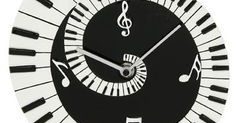Happy 72nd birthday to the one and only James Osterberg!
Silence!
Okay…Happy birthday to the one and only Iggy Pop.
Today we will feature one of Iggy Pop’s best known songs. Everybody loves ‘Lust for Life’. Where there is a great song, there is a great story and today is no exception.
When you blend the songwriting talents of Iggy Pop and the one and only David Bowie (yes, the six degrees of David Bowie prove true again) you get music magic and a raw energy that sets a standard for rock and roll. Now is a good time to mention that the original music for ‘Lust for Life’ was written on a ukulele. Iggy Pop wrote the words while Bowie created the riff. This was the beginning. The drum beat that has become synonymous with ‘Lust for Life’ was created by Hunt Sales. The rhythm was based on an Armed Forces call signal that Iggy Pop heard while waiting to watch an episode of Starsky and Hutch. It is that distinctive drum pattern that drives the energetic song.
It must be noted that for Hunt Sales’ part in the song he is clear that he borrowed from some predecessors himself. He points to The Supremes and Martha and the Vandellas.
Check out the pattern of these songs and then I will show you a song that came after ‘Lust for Life’ that cited Hunt Sales’ rhythm as an influence. I share this as an opportunity to illustrate that ‘the beat goes on’.
Here is ‘You Can’t Hurry Love’.
Note the similar beat in ‘I’m Ready for Love’.
Then we move on to post 1977 when artists and drummers who were inspired by ‘Lust for Life’ created their own take. One of the best examples is ‘Are You Gonna Be My Girl by Jet.
The energy in this song rivals Iggy Pop but the tie always goes to the original.
Speaking of originals and cover versions that reminds me of the purpose of this blog. ‘Lust for Life’ has left an indelible mark on pop culture and as an extension it has been connected to blatant commercialism. There is a commercial for a cruise company. No idea which one. Doesn’t matter. The point is, the song grabs people. The sign of a great song. The gift of ‘Lust for Life’ is in its spirit and inspiration. As a result, there have been several very good cover versions.
Here is Motley Crue with a solid drum track from Tommy Lee. Not a fan, but tis is good.
In the world of unlikely collaborations here is Tom Jones working with The Pretenders on a cover version of ‘Lust for Life’. It appeared on his 1999 album Reload that features a series of excellent duets with prominent acts. This is fantastic. Tom Jones is another artist that I have not paid nearly enough attention to, but his versatility is astounding. This is only rivalled by the sheer reach of his six decade career. A Ted Tocks tease here, but I will draw from this production again. Maybe on Tom Jones’ birthday. Gold mine!
Happy Easter! Appreciate every moment and make your lust for life apparent to everyone around you.
